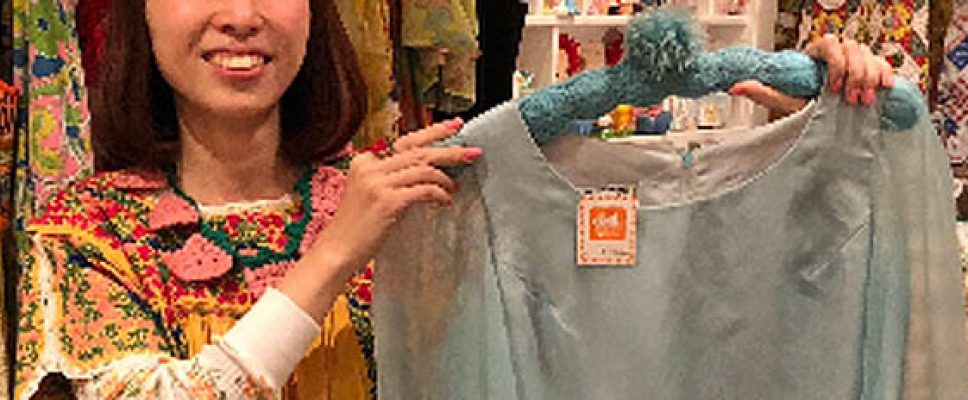Teresa’s Book Review: Secondhand by Adam Minter
Secondhand: Travels in the New Global Garage Sale by Adam Minter
I have a longstanding interest in garbage, recycling, waste management, and sustainability. The culture of unknown civilizations can be deciphered by their garbage heaps. That’s what archeologists are: history’s garbage analysts. What we throw away shows what we use. How we discard objects and their condition demonstrates our wealth. We are the wealthiest society on the face of the earth, ever, and our garbage proves it.
 Thus, I was thrilled to discover that Adam Minter had written a new book, Secondhand: Travels in the New Global Garage Sale. Minter is a longtime business journalist with a special interest in the waste stream, due to coming from a family that owned a scrapyard. I read his previous book Junkyard Planet: Travels in the Billion-Dollar Trash Trade with great interest. Since he grew up in a scrapyard, he has a much better feel for what recycling is as opposed to someone who tosses cans into the bin and never gives them another thought.
Thus, I was thrilled to discover that Adam Minter had written a new book, Secondhand: Travels in the New Global Garage Sale. Minter is a longtime business journalist with a special interest in the waste stream, due to coming from a family that owned a scrapyard. I read his previous book Junkyard Planet: Travels in the Billion-Dollar Trash Trade with great interest. Since he grew up in a scrapyard, he has a much better feel for what recycling is as opposed to someone who tosses cans into the bin and never gives them another thought.
We talk about recycling all the time, but most of us don’t understand it. Yes, your recycling bin is a harvest point for materials. However, if those harvested materials cost more than virgin materials, recycling doesn’t mean a thing. Cost always wins because manufacturers are primarily concerned about how much they’re about to spend on feedstocks for what they make.
So when do you recycle?
When you’ve done all the other steps.
This is the correct order if you are serious about being sustainable, saving money, reducing your carbon footprint, and saving the environment:
Reduce, reuse, repair, repurpose, recycle.
You recycle last; when there is zero life left in the object.
In Secondhand, as he did in Junkyard Planet, Minter takes us around the world to see how other people reuse, repair, and repurpose our discards. It can be heartbreaking. He starts with those firms that cleanout other people’s houses. If you’ve ever wondered what to do with your parents’ 3,000-square-foot house packed to the gunwales with stuff (I certainly do), cleanout firms will take care of your problem.
Does everything get carefully reused and restored for eager buyers? Not a chance. Most of what we hold dear isn’t dear to anyone else and it goes straight to the landfill. Even Goodwill can’t sell everything that gets donated and they try, first in the main store and then in their bargain bins. Then it goes to the landfill.
There’s just too much stuff.
Too many clothes, especially poor-quality fast fashion. Too many books. Too many outdated electronics that were never meant to be repaired.
Yet much of this avalanche of stuff can be reused in the third world. Goods we wouldn’t carefully disassemble and rebuild using cannibalized parts such as old TV’s are routinely rebuilt and reused.
Minter explores the secondhand market in the US, Japan, Mexico, Malaysia, and Africa, dispelling myths and wrong ideas along the way. He also proposes a potential solution to the tsunami of stuff: make better stuff that can be repaired.
Yes, as you suspected, plenty of things are designed so they cannot be repaired. I’m looking at you, Apple products. Clothing made to fall apart after four washings with 1/4-inch seam margins and fabric so cheap it can’t be reused. Did you know that light bulb manufacturers got together in 1926 to enact standards so that light bulbs failed quicker so they’d sell more? I didn’t. Minter also spends some time discussing why car-seat manufacturers insist that a car-seat is only good for six years and then poof, it expires and will kill your kids. There is no proof and no government standards for this position. It’s designed to sell more car-seats.
 I could go on and on but you’d be better off reading Secondhand yourself. Then, go back and read his first book, Junkyard Planet, for a look into what happens to that scrap paper and those cans you tossed into the recycling bin. Both books will open your eyes to a world you didn’t know existed, quietly humming away as it reuses what you don’t want anymore and makes money doing so.
I could go on and on but you’d be better off reading Secondhand yourself. Then, go back and read his first book, Junkyard Planet, for a look into what happens to that scrap paper and those cans you tossed into the recycling bin. Both books will open your eyes to a world you didn’t know existed, quietly humming away as it reuses what you don’t want anymore and makes money doing so.
And after you’re finished reading? And you’d like to make a change in your own life? Reduce, reuse, repair, repurpose, recycle. Buy less stuff, buy better quality stuff so it can be reused (clothing that can be worn more than a few times), repair your stuff (replace those lost buttons and resew those seams), repurpose your stuff so it gains another life (felt that wool sweater and turn it into potholders), and then recycle what’s left.
In the spirit of recycling, I’ll suggest that you can find both of Adam Minter’s books in most libraries or bookstores.
Or, if you want to go online, go to Amazon for Secondhand and for Junkyard Planet.
If you’d like to visit Adam Minter’s minimal website.
